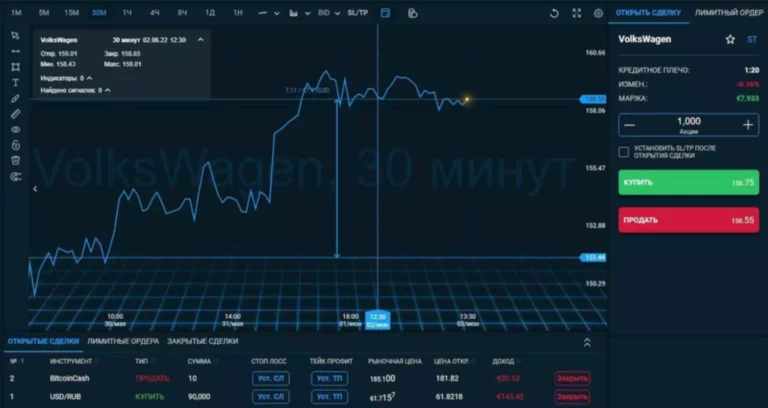One can find the standard deviation of a complete inhabitants in instances (such as standardized testing) the place every member of a population is sampled. Such a statistic known as an estimator, and the estimator (or the value of the estimator, namely the estimate) is recognized as a pattern standard deviation, and is denoted by s (possibly with modifiers). Random variables are the numerical values that denote the possible outcome of the random experiment within the pattern area.
Standard deviation is calculated as the sq. root of the variance. Standard deviation is one of the key basic danger measures that analysts, portfolio managers, and advisors use. Investment corporations report the usual deviation of their mutual funds and other products. A giant dispersion shows how much the return on the fund is deviating from the expected normal returns.
Step 2: Discover Every Score’s Deviation From The Imply
Calculate the standard deviation and mean diameter of the circles. For a complete collection of maths formulas across totally different grade ranges and ideas, hold following GeeksforGeeks. In likelihood of all of the potential outcomes is mostly equal and we take many trials to search out the experimental likelihood of the given experiment.
- The above formulas become equal to the easier formulas given above if weights are taken as equal to one.
- For a comprehensive assortment of maths formulation throughout different grade levels and ideas, hold following GeeksforGeeks.
- For example, assume an investor had to determine on between two stocks.
- The formulation for variance is the sum of squared variations from the imply divided by the dimensions of the info set.
- Standard Deviation is a measure which exhibits how much variation (such as spread, dispersion, spread,) from the mean exists.
In instances the place values fall exterior the calculated range, it might be essential to make changes to the production process to ensure quality control. Please provide numbers separated by commas to calculate the usual deviation, variance, imply, sum, and margin of error. This is especially true considering the distinction from the imply is squared, leading to an even bigger amount in comparability with other information points. Therefore, be conscious that commonplace remark naturally gives more weight to excessive values.
What Does Standard Deviation Inform You?
Financial time sequence are recognized to be non-stationary sequence, whereas the statistical calculations above, corresponding to normal deviation, apply only to stationary collection. To apply the above statistical tools to non-stationary collection, the series first should be reworked to a stationary series, enabling use of statistical instruments that now have a valid foundation from which to work. Using words, the standard deviation is the square root of the variance of X. Although the units of variance are more durable to intuitively perceive, variance is necessary in statistical tests. If you want to know more about statistics, methodology, or research bias, make sure to take a look at a few of our other articles with explanations and examples. To find the usual deviation, we take the sq. root of the variance.
The empirical rule is a quick approach to get an overview of your knowledge and examine for any outliers or extreme values that don’t comply with this sample. A excessive standard deviation implies that values are usually far from the imply, while a low normal deviation indicates Technical Indicators that values are clustered close to the mean. The essential change is “N-1” instead of “N” (which is recognized as “Bessel’s correction”). To work out the mean, add up all the values then divide by how many. In the formula above μ (the greek letter “mu”) is the mean of all our values …

In a chance density perform, the realm underneath the curve tells you chance. The normal distribution is a chance distribution, so the whole space beneath the curve is always 1 or one hundred pc. With samples, we use n – 1 in the formula because utilizing n would give us a biased estimate that persistently underestimates variability. The sample standard deviation would tend to be lower than the real normal deviation of the inhabitants. Different formulation are used for calculating normal deviations depending on whether or not you have collected data from a whole inhabitants or a sample.
The imply deviation is used to inform us about the scatter of the info. To discover out details about the population (such as mean and standard deviation), we don’t need to take a glance at all members of the inhabitants; we only want a sample. Take the sq. root of the inhabitants variance to get the usual deviation.
Why Can We Use Standard Deviation?
Divide the sum of the squares by n – 1 (for a sample) or N (for a population) – that is the variance. Reducing the pattern n to n – 1 makes the standard deviation artificially giant, giving you a conservative estimate of variability. Check out extra issues on variance and commonplace deviation of grouped knowledge and Statistics, register with BYJU’S – The Learning App to be taught with ease.

The sensible value of understanding the standard deviation of a set of values is in appreciating how much variation there’s from the common (mean). While the standard deviation does measure how far typical values tend to be from the mean, other measures are available. An example is the imply absolute deviation, which might be thought-about a extra direct measure of average distance, compared to the root imply square distance inherent in the usual deviation. These similar formulae can be utilized to acquire confidence intervals on the variance of residuals from a least squares fit underneath commonplace normal concept, where k is now the variety of degrees of freedom for error.
Calculating the usual deviation of the random variable tells us about the probability distribution of the random variable and the degree of the difference from the anticipated worth. The standard deviation of the given sample of the info set can be outlined because the sq. root of the variance of the info set. The imply deviation of the n values (say x1, x2, x3, …, xn) is calculated by taking the sum of the squares of the distinction of each worth from the imply, i.e.
In a standard distribution, information is symmetrically distributed with no skew. When plotted on a graph, the information follows a bell form, with most values clustering round a central region and petering out as they go further away from the center. Standard deviation is extensively used in experimental and industrial settings to test fashions against real-world information. An example of this in industrial functions is quality management for some merchandise. Standard deviation can be utilized to calculate a minimum and maximum worth inside which some side of the product should fall some high share of the time.
Standard deviation in statistics, typically denoted by σ, is a measure of variation or dispersion (refers to a distribution’s extent of stretching or squeezing) between values in a set of knowledge. The decrease the standard deviation, the closer the info points tend to be to the imply (or anticipated value), μ. Conversely, a better standard deviation signifies a wider range of values. Similar to other mathematical and statistical concepts, there are many completely different situations by which normal deviation can be utilized, and thus many different equations. In addition to expressing population variability, the standard deviation can be often used to measure statistical results such as the margin of error. When used in this manner, commonplace deviation is often referred to as the usual error of the imply, or normal error of the estimate with regard to a mean.
The calculator above computes population normal deviation and pattern commonplace deviation, as nicely as confidence interval approximations. The unfold of statistical information is measured by the usual deviation. The degree of dispersion is computed by the method of estimating the deviation of information points. As mentioned, the variance of the information set is the common square distance between the mean worth and each data value. And commonplace deviation defines the spread of knowledge values around the imply. Here are two standard deviation formulas which would possibly be used to seek out the usual deviation of pattern information and the usual deviation of the given inhabitants.
The Standard Deviation is greater when the variations are more spread out … It also provides a worth of 4, Even although the differences are more spread out. We can expect about 68% of values to be within plus-or-minus 1 normal deviation.
The higher the standard deviation of securities, the higher the variance between each value and the mean, which reveals a bigger price range. For example, a risky stock has a high standard deviation, while the deviation of a secure blue-chip stock is usually quite low. In two dimensions, the usual deviation can be illustrated with the standard deviation ellipse (see Multivariate regular distribution § Geometric interpretation). S0 is now the sum of the weights and not the number of samples N. As a easy example, think about the common every day maximum temperatures for two cities, one inland and one on the coast. It is helpful to understand that the vary of daily maximum temperatures for cities close to the coast is smaller than for cities inland.


